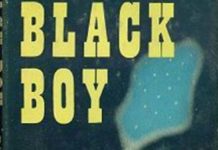Larry Gara’s Liberty Line, published in 1961, is unquestionably the most influential book on the Underground Railroad of the last 50 years.
Liberty Line, Its Conclusions
Its repudiation of the traditional view of the Underground Railroad has generally been accepted by most mainstream historians. It made four significant conclusions:
- The Underground Railroad had little organization
- The work was mainly conducted by blacks and the role of whites was inflated by propaganda
- The part fugitive slaves played in their escape was vastly underemphasized
- The number of underground railroad passengers was vastly exaggerated
Wilbur Siebert’s Role
Gara singled out historian Wilbur Siebert, who based his work on the remembrances of old white abolitionists, as the culprit of the traditional Underground Railroad story. He claimed that Siebert had accepted these remembrances at face value. Gara countered that most of these remembrances had romanticized the past and exaggerated the role of the Underground Railroad.
W.L. Garrison, Quakers, and Vigilance Committees
Gara pointed out that abolitionists, like William Lloyd Garrison, “were too busy agitating against slavery” to be involved in the Underground Railroad. However, while he may not have directly participated in the Underground Railroad, the Liberator’s offices were used to hide fugitive slaves and for meetings of the Boston Vigilance Committee.
Gara claimed that few Quakers were involved in the Underground Railroad because of the large numbers of Quakers who disapproved of taking an activist role. Nevertheless, thousands of Quaker did participate. For example, recent scholarship has identified eighty-two Quakers who aided fugitive slaves in Chester County, Pennsylvania, alone. Other Underground Railroad Quaker strongholds were Salem, Iowa; Newport, Indiana; Alum Creek, Ohio; Cass County, Michigan; Farmington, New York; and New Bedford, Massachusetts.
Gara suggested that because relatively few abolitionists entered the South to entice slaves to flee, it was evidence that the Underground Railroad had little structure. However, prolific Quaker conductor Thomas Garrett said the reason he did not entice slaves was because of the danger it posed to his Underground Railroad activities. Nevertheless, a significant number did cross the Mason-Dixon Line, some who lost their lives in the process.
Gara’s most important contentions that the Underground Railroad had little if any organization, has been debated among historians for years.
The truth is that there was plenty of organization and mountains of evidence.
The first formally organized Underground Railroad association was the New York Committee of Vigilance, formed in 1835 under the leadership of David Ruggles. We have a lengthy 1837 report that enumerates aid to fugitive slaves and details the committee’s struggles with slavecatchers. Reports of its operations continue up through the mid-1850s, complete with accounts of meetings and number of fugitive slaves aided.
The Philadelphia Vigilance Committee, originally formed in 1837 under the leadership of Robert Purvis was another important Underground Railroad organization. It suspended operations in 1842 and passed on this duty to the Pennsylvania Anti-Slavery Society. A second Philadelphia Vigilance Committee formed in 1852, from which William Still emerged as the leader. During Still’s tenure, he kept recorded detailed records that he used to write his definitive account of the Underground Railroad.
Other records of activity were kept by Francis Jackson, treasurer of the Boston Vigilance Committee. His Account Book recorded the names of fugitive slaves, the amount of money spent on them, and their destinations, from 1851-1861. It also included a list of committee members, as well as unofficial associates, mainly blacks, whose homes were used to harbor fugitive slaves.
Evidence of collaboration between the Boston, New York, and Philadelphia committees, as well as with agents in Washington, D.C., is well documented.
Midwest Underground Railroad
While detailed records do not exist of Underground Railroad efforts in the Midwest, it was the real heart of the Underground Railroad. The activities of Levi Coffin and John Rankin have been preserved in numerous accounts, and thousands of stories testifying to its operation there, were preserved by Wilbur Siebert.
Siebert Collection Letters
Around 1892, Siebert began sending a circular with seven questions to those he had learned were involved in the Underground Railroad or had relatives or friends who were. Most of the responses were from the 1890s and written by people who were eyewitnesses. However, Gara questioned them, saying that such reminiscences “are bound to be full of inaccuracies.” In an attempt to show the lack of Underground Railroad activity in Illinois, Gara chose a letter by W.H. Lyford, an obscure abolitionist, whose account differs from the overwhelming majority of accounts collected by Siebert. Such selectivity by Gara shows inherent bias in his work.
Another letter in the Siebert Collection that Gara choose to exemplify was that of Rev. Joshua Young of Burlington, Vermont. He had little to tell, Gara wrote, using only the following statement from Young to suggest his lack of involvement: “Perhaps my connection to the Underground Railroad has been exaggerated, owing to the circumstances of my being the only present and officiating clergyman at John Brown’s funeral, which gave me some prominence among abolitionists.” Unfortunately, Gara ignored the rest of Young’s eight page letter that included the following:
. . . how many poor scared creatures I secreted in cellars or garrets until the danger was past I cannot tell, only this I did again and again, both while living in Boston and in Burlington . . .
Mr. Gara’s incomplete version of the facts about the Underground Railroad has led other historians to not only make the same mistakes but to propagate different erroneous views. Certainly, no national Underground Railroad organization existed. But many questions remain unanswered.
References:
- Larry Gara, Liberty Line (Lexington, KY: University Press of Kentucky, 1996 edition).
- Florence T. Ray, Sketch of the Life of Rev. Charles B. Ray (New York: Press of J. J. Little & Co., 1887).
- Wilbur H. Siebert Underground Railroad Collection, Ohio Historical Society, Columbus, Ohio.
- Wilbur H. Siebert, The Underground Railroad in Massachusetts (Worcester: American Antiquarian Society, 1936).
- William Still, The Underground Railroad (1872; reprint, Chicago: Johnson Brothers, 1971).








